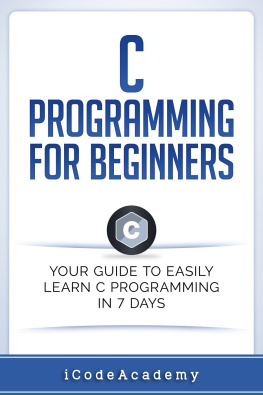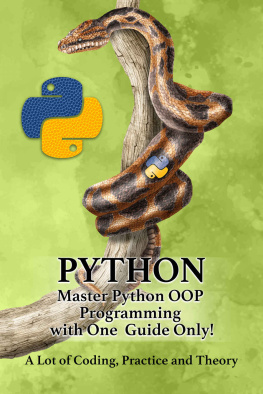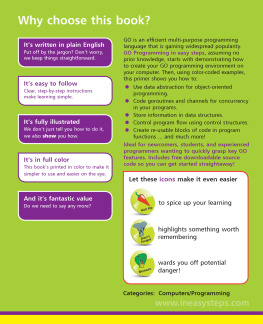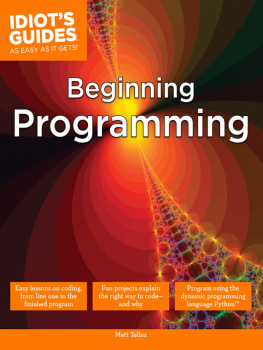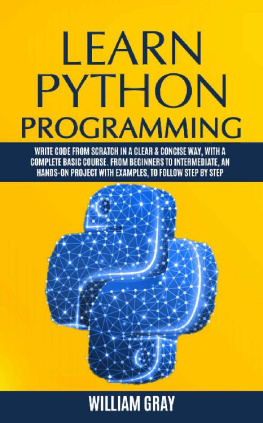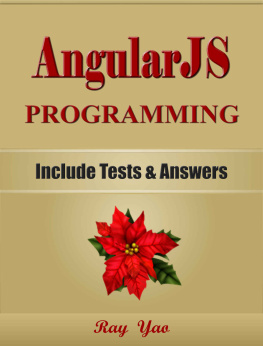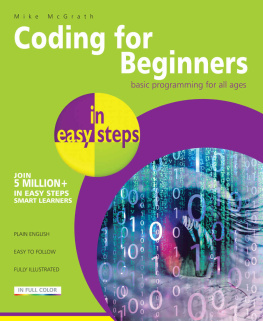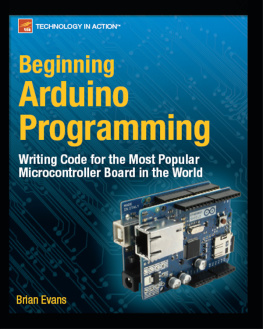Computer
Programming
For Pupils
For Beginners
Jennifer Rose
Copyright 2020 by Jennifer Rose
All Rights Reserved
Neither part of this book nor whole of this book may be reproduced or transmitted in any form or by any means electronic, photographic or mechanical, including photocopying, recording, or by any information storage or retrieval system, without prior written permission from the author . All rights reserved !
Jennifer Rose
Who is this book for?
This book is only suitable for those people who never know the computer programming.
If you have a little bit of computer programming experience, this book is not for you!
Preface
Computer Programming covers all basic computer language knowledge . You can learn complete primary skills of programming fast and easily .
It includes a lot of essential programming tact, such as data type, variables, constants, operators, if statement, while loop, array, functions, escape characters, etc ..
With many practical examples and hands-on projects, you will can learn programming quickly, and write code by yourself soon .
Source Code for Download
This book provides source code for download; you can download the source code for better study, or copy the source code to your favorite editor to test the programs .
Download link of source code:
https://forms . aweber . com/form/63/916863563 . htm
Note:
This book is only suitable for complete beginners; it is not for any experienced programmers .
Table of Contents
Programming Basic
What Are Programming Languages?
Programming language is a formal language used to define computer programs . It is a standardized communication skill used to give instructions to a computer . A computer language allows programmers to define exactly what data the computer needs to use and what actions it should take in different situations .
The first programming languages came after the invention of computers to control jacquard looms and auto-play piano movements . The description of a programming language can be divided into syntax and semantics: the grammar is to explain which symbols or words are combined in the correct way, and the semantics is to explain programming .
The programming language commonly known as "computer language " . In general, it can be divided into three categories, such as machine language, assembly language, advanced language .
Every action of a computer is performed according to the instructions already programmed in computer language . A program is a collection of instructions to be executed by a computer . Programs are written in one language we know, so people must control the computer through the computer programming language .
What About The History Of Programming Language?
The development of programming language can be simply divided into the following three stages:
Machine language > Assembly language > Advanced language |
(1) Machine Language
This is the first generation programming language .
The early computers used binary numbers consisting of 0 and 1 . Binary was the basis of the machine language . At the beginning of the invention of the computer, the computer can only be used by a small number of people, they need to use 0 and 1 composed of the instruction sequence for the computer to execute . It is very headache for the use and popularity of the machine language, because each computer instruction system tends to be different, the instructions that are executed on one computer must be programmed separately in order to be executed on another . There is almost no migration capability for the program made by the machine language, so its labor costs are very high .
(2) Assembly Language
This is the second generation programming language .
A useful improvement has been made to ease the pain of programming in machine languages . Assembly language is a language born on the basis of machine language . It uses some concise English letters, symbols and strings represent a specific binary instruction, which also improves the memory and recognition of the language . Example, the ADD represents addition, MOV represents the data transfer, and so on . However, computers do not recognize these characters, which requires a special program to translate them into the binary number of the machine language, this translated program is called assembly language . It plays an active role in the development and maintenance of the computer language .
But assembly language also relies directly on the hardware, which still limits its portability .
(3) Advanced Language
This is the third generation programming language .
In the continuous communication with the computer, people's demand for the portability of computer programs is constantly increasing . At this moment, there was an urgent need for a language that did not depend on a particular model of computer, and programs written in this language can run on a variety of platforms . People realized that they should design a language that was close to the universal language of mathematics or the natural language of human beings, but independent of computer hardware, and that could be programmed to work on all machines .
As a result, advanced languages were born in the computer field . Since the birth of the advanced language, hundreds of advanced languages have appeared successively . Advanced languages evolved from structured languages to process-oriented languages and then to object-oriented languages .
The early use of advanced languages is the process-oriented languages, such as Fortune, Cobol, Pascal, Ada, Lisp, Algol, Prolog
The later use of advanced languages is the object-oriented languages, such as C++, C#, JAVA, JAVASCRIPT, PHP, Python
(4) Next Generation Language
The next generation language is application-oriented language, which means that you just need to tell the program what you want to do, and the program will automatically generate algorithms and do the processing . This is an artificial intelligence computer language .
What Are Popular Programming Languages Now?
Nowadays there are eight popular programming languages being used extensively in the programming field, they are C++, C#, JAVA, JAVASCRIPT, PHP, PYTHON, VISUAL BASIC, HTML .
(1) C++ Programming Language
C++ language is developed from the C language
The C language was developed by D . M . Ritchie of bell LABS in 1972 . It is not designed for beginners at first, but for computer professionals . C is a process-oriented language . With the scale of software increases, C is no longer suitable for the needs of computer development . It cannot handle complex and large tasks .
In this software crisis situation, C++ language came into being, it was developed by Dr . Bjarne Strostrup of AT&T Bell LABS in the 1980s .
C++ language main features:
- Compatible with both advanced and primary languages
- Excellent portability . Simple and easy to use
- Support for object-oriented programming
- Can handle large and complicate programs
- Fast speed compilation and development
To know more the C++ programming, please search the related ebook or paperback book on Amazon, such as:


